Reaching Your Students
Teaching Techniques and Professional Growth
In the last two decades or so, educators began talking a lot about learning styles: visual learners, kinesthetic learners, and the like. However, these learning styles do not fit students neatly. The trick is to combine elements of these learning styles in a way that address the needs of your students.
Below are some resources on different teaching techniques which you can implement in your class:
Tools and Resources
- The Teacher’s Corner: Classroom tools website list
- Teach 4 the Heart: Seventy-five websites recommended by teachers, for teachers
- We Are Teachers: Thirty-one free websites for lesson plans and activities
- Scholastic Teachers: Twenty-five websites for Pre-K to 12th grade classroom management and family involvement
- Common Sense Media: Age-based reviews of television shows, movies, and books
- Common Sense Education: Forty-three apps and games as classroom tools
- RefSeek: Twenty-five websites with free classroom activities and lessons
- Educator’s Technology: Ten websites for study guides, lesson plans, and EdTech tools
- Teaching Degrees: Over 7000 online teaching degree programs to expand your range as an educator
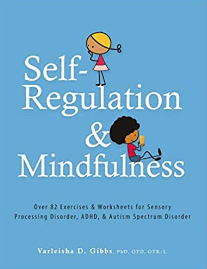
Self-Regulation and Mindfulness: Over 82 Exercises & Worksheets for Sensory Processing Disorder, ADHD, & Autism Spectrum Disorder
Based on the latest research in neuroscience, Self-Regulation & Mindfulness provides highly practical, kid friendly lessons to teach therapists, parents, educators and children about their brain and body, so they can build the needed skills to self-regulate.

The Distance Learning Playbook, Grades K-12: Teaching for Engagement and Impact in Any Setting
The pandemic teaching of mid-2020 was not really distance learning, but rather crisis teaching. But starting now, teachers have the opportunity to prepare for distance learning with purpose and intent―using what works best to accelerate students’ learning all the while maintaining an indelible focus on equity.
Harnessing the insights and experience of renowned educators Douglas Fisher, Nancy Frey, and John Hattie, The Distance Learning Playbook applies the wisdom and evidence of VISIBLE LEARNING® research to understand what works best with distance learning. Spanning topics from teacher-student relationships, teacher credibility and clarity, instructional design, assessments, and grading, this comprehensive playbook details the research- and evidence-based strategies teachers can mobilize to deliver high- impact learning in an online, virtual, and distributed environment.
Techniques and Methods
- teach.com: Teaching methods summarized
- GoConqr: Growth through Learning teaching techniques
- PDF on Interactive Techniques
- tolerance.org: Teaching hard histories
- Edutopia: The Power of Being Seen: How well do you know your students? In a Nevada school, a simple strategy pushes teachers to look beyond the lessons.
- Edutopia: Teacher Support: High-quality teaching is vital for student success. Explore elements of effective professional development and leadership critical for growing and supporting great teachers.
- The Handbook of Social and Emotional Learning: Social and Emotional Learning in Elementary School Settings: Identifying Mechanisms That Matter: Adopting an SEL intervention translates into shifts in teachers’ and students’ day-to-day behaviors and experiences in the classroom. This chapter builds upon prior work by looking inside classrooms to consider student and teacher mechanisms responsible for program effects.
- Free Spirit Publishing: Enhancing Social and Emotional Learning Through Self-Regulation: While educating students on social and emotional development is certainly a worthy endeavor, SEL alone does not give kids the whole picture of what it means to be self-regulated. We also need to help students learn how to learn, or become self-regulated learners.

Learning to Choose, Choosing to Learn: The Key to Student Motivation and Achievement
Offering students choices about their learning, says author Mike Anderson, is one of the most powerful ways teachers can boost student learning, motivation, and achievement. In his latest book, Anderson offers numerous examples of choice in action, ideas to try with different students, and a step-by-step process to help you plan and incorporate choice into your classroom.

Attachment-Based Teaching: Creating a Tribal Classroom
Human brains are social, and a student’s ability to learn is deeply influenced by the quality of his or her attachment to teachers and peers. Secure attachment relationships not only ensure our overall well-being, but also optimize learning by enhancing motivation, regulating anxiety, and triggering neuroplasticity. This book presents a classroom model of secure attachment, exploring how teacher-student rapport is central to creating supportive, “tribal” classrooms and school communities.
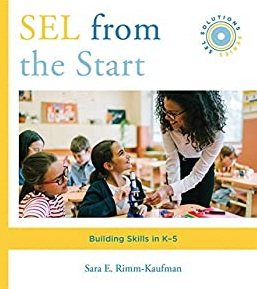
SEL from the Start: Building Skills in K-5 (Social and Emotional Learning Solutions)
Teachers are trained to manage misbehavior in the classroom, but receive little guidance about how to cultivate positive, prosocial behavior.
With this book in hand, elementary teachers will be ready to launch the school year with confidence, using the concrete strategies in each chapter for improving students’ SEL skills in the five categories defined by CASEL (the Collaborative for Academic, Social, and Emotional Learning): communication skills, emotion management, emotional awareness, social awareness, and decision-making skills. This handy guide breaks down instruction of these skills into small, sequenced steps, making it easy to foster students’ skills from the start of school and build on them as the year progresses.

Self-Regulation in the Classroom: Helping Students Learn How to Learn
In Self-Regulation in the Classroom, Richard M. Cash translates research and theory into easy-to-implement strategies and ideas you can use to help students—with special needs and without—become self-directed learners.
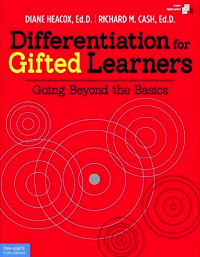
Differentiation for Gifted Learners: Going Beyond the Basics
Within a group of advanced learners, the variety of abilities, talents, interests, and learning styles can be formidable. For the first time, this book connects the unique learning differences among gifted students to the specific teaching methods used to tailor their educational experiences. Differentiated instruction for gifted and talented students must go beyond adjusting content levels, task complexity, or product choice.

End Peer Cruelty, Build Empathy: The Proven 6Rs of Bullying Prevention That Create Inclusive, Safe, and Caring Schools
Based on a practical, six-part framework for reducing peer cruelty and increasing positive behavior support, End Peer Cruelty, Build Empathy utilizes the strongest pieces of best practices and current research for ways to stop bullying. The book includes guidelines for implementing strategies, collecting data, training staff, mobilizing students and parents, building social-emotional skills, and sustaining progress, and presents the “6Rs” of bullying prevention: Rules, Recognize, Report, Respond, Refuse, and Replace. This is not a program, but a comprehensive process for reducing bullying from the inside out, involving the entire school community. Bullying-prevention and character education expert Michele Borba, who’s worked with over 1 million parents and educators worldwide, offers realistic, research-based strategies and advice. Use the book on its own or to supplement an existing program. Digital content includes customizable forms from the book and a PDF presentation for use in professional development.

Brain-Changing Strategies to Trauma-Proof Our Schools: A Heart-Centered Movement for Wiring Well-Being
More than 32 million children in the US suffer from trauma symptoms. Some have had adverse childhood experiences (ACEs), like neglect, abuse, violence, and loss, or have experienced distress from medical trauma and social injustice. Toxic traumatic stress shapes the structure and function of both brain and body, which can lead to anxiety, hyperactivity, aggression, shutting down, and acting out–emotions and behaviors that hinder learning and create classroom chaos.
Maggie Kline, a family therapist, trauma specialist, school psychologist, and former teacher, gives you whole-brain, heart-centered tools to identify and reverse trauma-driven behaviors so students feel supported and safe.

The On-Your-Feet Guide to Building Authentic Student-Teacher Relationships
This On-Your-Feet Guide provides tested strategies for building authentic relationships with your students. These authentic relationships between students and adults ensure that students know that they are valued, respected, and trusted. Authentic relationships help students grow as individuals and they help educators grow as professionals.
On-Your-Feet Guides (OYFGs) provide you with the ultimate “cheat sheet” to implement effective change in your classroom while in the moment of teaching. Designed for accessibility, and providing step-by-step guidance, the OYFGs are written by experts who take research-based practices and make them doable for the busy teacher.

Teaching Hope and Resilience for Students Experiencing Trauma: Creating Safe and Nurturing Classrooms for Learning
Huge numbers of our students are caught in storms of trauma―whether stemming from abuse, homelessness, poverty, discrimination, violent neighborhoods, or fears of school shootings or family deportations. This practical book focuses on actions that teachers can take to facilitate learning for these students. Identifying positive, connected teacher–student relationships as foundational, the authors offer direction for creating an emotionally safe classroom environment in which students find a refuge from trauma and a space in which to process events. The text shows how social and emotional learning can be woven into the school day; how literacies can be used to help students see a path through challenges; how to empower learners through debate, civic action, and service learning; and how to use the vital nature of the school community as an agent of change. This book will serve as a roadmap for creating uniformly consistent and excellent classrooms and schools that better serve children who experience trauma in their lives.

All Learning Is Social and Emotional: Helping Students Develop Essential Skills for the Classroom and Beyond
While social and emotional learning (SEL) is most familiar as compartmentalized programs separate from academics, the truth is, all learning is social and emotional. What teachers say, the values we express, the materials and activities we choose, and the skills we prioritize all influence how students think, see themselves, and interact with content and with others.
If you teach kids rather than standards, and if you want all kids to get what they need to thrive, Nancy Frey, Douglas Fisher, and Dominique Smith offer a solution: a comprehensive, five-part model of SEL that’s easy to integrate into everyday content instruction, no matter what subject or grade level you teach.

The Teacher Clarity Playbook, Grades K-12: A Hands-On Guide to Creating Learning Intentions and Success Criteria for Organized, Effective Instruction
When learning progressions and success criteria are clear, students achieve. It’s that simple―because it indicates that teachers are intentional and learners know both the why and the how behind every endeavor. With The Teacher Clarity Playbook, you now have the tools and templates to make it happen. Designed for PLCs or independent teacher use, it guides practitioners to align lessons, objectives, and outcomes of learning seamlessly, so that the classroom hours flow productively for everyone. Written by Douglas Fisher, Nancy Frey, Olivia Amador, and Joseph Assof, educators dedicated to making high impact, research based practices a part of every teacher’s repertoire.

Better Than Carrots or Sticks: Restorative Practices for Positive Classroom Management
Rewards and punishments may help to maintain order in the short term, but they’re at best superficially effective and at worst counterproductive. This book will prepare teachers at all levels to ensure that their classrooms are welcoming, enriching, and constructive environments built on collective respect and focused on student achievement.

Reaching and Teaching Students in Poverty: Strategies for Erasing the Opportunity Gap
This influential book describes the knowledge and skills educators need to recognize and combat the bias and inequity that undermine educational engagement for students experiencing poverty. This edition features revisions based on new research and lessons from the author’s professional development work, including the dangers of “grit” and deficit perspectives.

The Trauma-Sensitive Classroom: Building Resilience with Compassionate Teaching
Nearly half of all children have been exposed to at least one adverse childhood experience (ACE), such as poverty, divorce, neglect, substance abuse, or parent incarceration. This workbook-style resource shows K-12 educators how to integrate trauma-informed strategies into daily instructional practice through expanded focus on the experiences and challenges of students impacted by ACEs, including suicidal tendencies, cyberbullying, and drugs, behavior as a form of communication and how to explicitly teach new behaviors, and how to mitigate trauma and build innate resiliency.
Philosophy and Pedagogy
- Learning & the Brain®: Connect with the latest research on the brain and learning through conferences, seminars, and summer institutes.
- Mr. Adam Welcome: Nineteen blogs and websites on pedagogy
- Teachers of Tomorrow: Fifty education-focused blogs for classroom concepts, current events, and personal experience

Permission to Feel: Unlocking the Power of Emotions to Help Our Kids, Ourselves, and our Society Thrive
How are you feeling? We ask this question often because our feelings are an important source of information about our internal lives, yet too often we do not ask or answer with sincerity. Marc Brackett, a Yale professor and Director of the Yale Center for Emotional Intelligence, argues that our emotions, though messy, make us human. Further, when we deny ourselves permission to feel, as we often do, we as individuals and a society suffer adverse consequences. In Permission to Feel: Unlocking the Power of Emotions to Help Our Kids, Ourselves, and our Society Thrive, Brackett draws on his extensive research expertise and personal experiences to teach skills for recognizing, understanding, labeling, expressing, and regulating emotions.

What We Say and How We Say It Matter: Teacher Talk That Improves Student Learning and Behavior
What teachers say to students—when they praise or discipline, give directions or ask questions, and introduce concepts or share stories—affects student learning and behavior. A slight change in intonation can also dramatically change how language feels for students. In What We Say and How We Say It Matter, Mike Anderson digs into the nuances of language in the classroom. This book’s many examples will help teachers examine their language habits and intentionally improve their classroom practice so their language matches and supports their goals.

Emotions, Learning, and the Brain: Exploring the Educational Implications of Affective Neuroscience
In this ground-breaking collection, Mary Helen Immordino-Yang―an affective neuroscientist, human development psychologist, and former public school teacher―presents a decade of work with the potential to revolutionize educational theory and practice by deeply enriching our understanding of the complex connection between emotion and learning.

The Social Neuroscience of Education: Optimizing Attachment and Learning in the Classroom
This book explains how the brain, as a social organism, learns best throughout the lifespan, from our early schooling through late life. Positioning the brain as distinctly social, Louis Cozolino helps teachers make connections to neurobiological principles, with the goal of creating classrooms that nurture healthy attachment patterns and resilient psyches.

Connections Over Compliance: Rewiring Our Perceptions of Discipline
Children who carry chronic behavioral challenges are often met with reactive and punitive practices that can potentially reactivate the developing stress response systems.
This book deeply addresses the need for co-regulatory and relational touch point practices, shifting student-focused behavior management protocols to adult regulated brain and body states which are brain aligned, preventive, and relational discipline protocols. This new lens for discipline benefits all students by reaching for sustainable behavioral changes through brain state awareness rather than compliance and obedience.

Unwritten, The Story of a Living System: A Pathway to Enlivening and Transforming Education
There’s never been a more chaotic and tenuous time in our nation’s educational story. Learning is the most natural thing human beings do. Yet, it seems the “harder” we work in schools helping our students to acquire the learning they need, the academic performances stay stagnant or lessen. Schools are not machines. Schools are a network of human beings who feel, think, behave, and function within a human system that is alive and never static. Schools are living systems! This system is wired to thrive, even through difficult times – Lori and Michael believe that we can begin to create wholeness and connection within our schools mindfully and by design. We can create places where all children thrive.

How May I Serve You? Revelations in Education
There is rarely a day that passes where educational reform is not the headline news in our national and global media. We see public schools floundering, an increase in standardized assessments, an increase in teacher evaluations based on student growth, turnaround schools being taken over by private industry and charter schools opening like wildfires- yet, it feels to be the same dialogue originating from the outside in; a desire to fix and control what is broken without a deeper understanding of relationships and reflection. To save a system, or another, one must return to the heart brain connection that leads with self-reflection and an integrity that is willing to seek personal change, perspective and compassion.

Tech with Heart: Leveraging Technology to Empower Student Voice, Ease Anxiety, & Create Compassionate Classrooms
Academic-related anxiety is common in high-achieving and struggling classrooms alike. So how can teachers calm students’ fears and empower them as learners?
Educator Stacey Roshan found the answer with technology. In Tech with Heart, Stacey shares that the fight to be first, the pressure to be right, and the stress surrounding test scores were just a few of the many reasons she chose to flip her class.
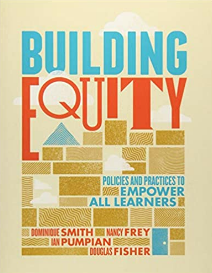
Building Equity: Policies and Practices to Empower All Learners
In Building Equity, Dominique Smith, Nancy Frey, Ian Pumpian, and Douglas Fisher, colleagues at San Diego’s innovative Health Sciences High & Middle College, introduce the Building Equity Taxonomy, a new model to clarify the structural and interpersonal components of an equitable and excellent schooling experience, and the Building Equity Review and Audit, survey-based tools to help school and teacher leaders uncover equity-related issues and organize their efforts to achieve physical integration, social-emotional engagement, opportunity to learn, and instructional excellence.
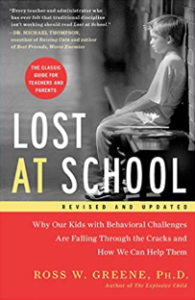
Lost at School: Why Our Kids with Behavioral Challenges are Falling Through the Cracks and How We Can Help Them
Relying on research from the neurosciences, Dr. Greene offers a new conceptual framework for understanding the difficulties of kids with behavioral challenges and explains why traditional discipline isn’t effective at addressing these difficulties. Emphasizing the revolutionarily simple and positive notion that kids do well if they can, he persuasively argues that kids with behavioral challenges are not attention-seeking, manipulative, limit-testing, coercive, or unmotivated, but that they lack the skills to behave adaptively. And when adults recognize the true factors underlying difficult behavior and teach kids the skills in increments they can handle, the results are astounding: The kids overcome their obstacles; the frustration of teachers, parents, and classmates diminishes; and the well-being and learning of all students are enhanced.
In Lost at School, Dr. Greene describes how his road-tested, evidence-based approach — called Collaborative Problem Solving — can help challenging kids at school.

Teaching to Strengths: Supporting Students Living with Trauma, Violence, and Chronic Stress
Half the students in U.S. schools are experiencing or have experienced trauma, violence, or chronic stress. Much has been written about these students from a therapeutic perspective, especially regarding how to provide them with adequate counseling supports and services. Conversely, little has been written about teaching this population and doing so from a strengths-based perspective.
Experts Debbie Zacarian, Lourdes Alvarez-Ortiz, and Judie Haynes outline a comprehensive, collaborative approach to teaching that focuses on students’ strengths and resiliency. Teaching to Strengths encourages educators to embrace teaching and schoolwide practices that support and enhance the academic and socio-emotional development of students living with trauma, violence, and chronic stress.